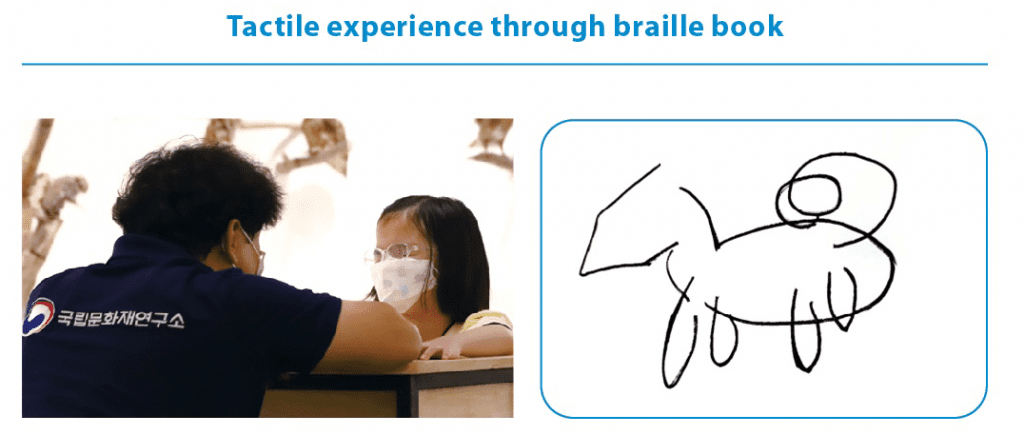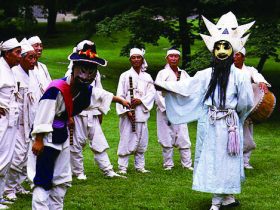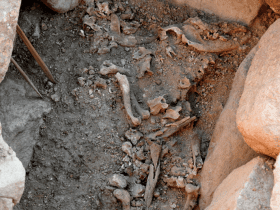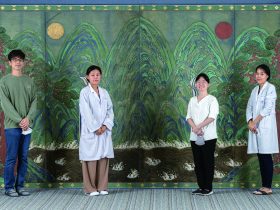Stories of the Wise Pre-historic People and Stories of the Natural Heritage Animals, from the Series Touch and Sound Multimedia Braille-Tactile Books
Research Division of Archaeology
LEE Chorong
Natural Heritage Division
LEE Sungkyung


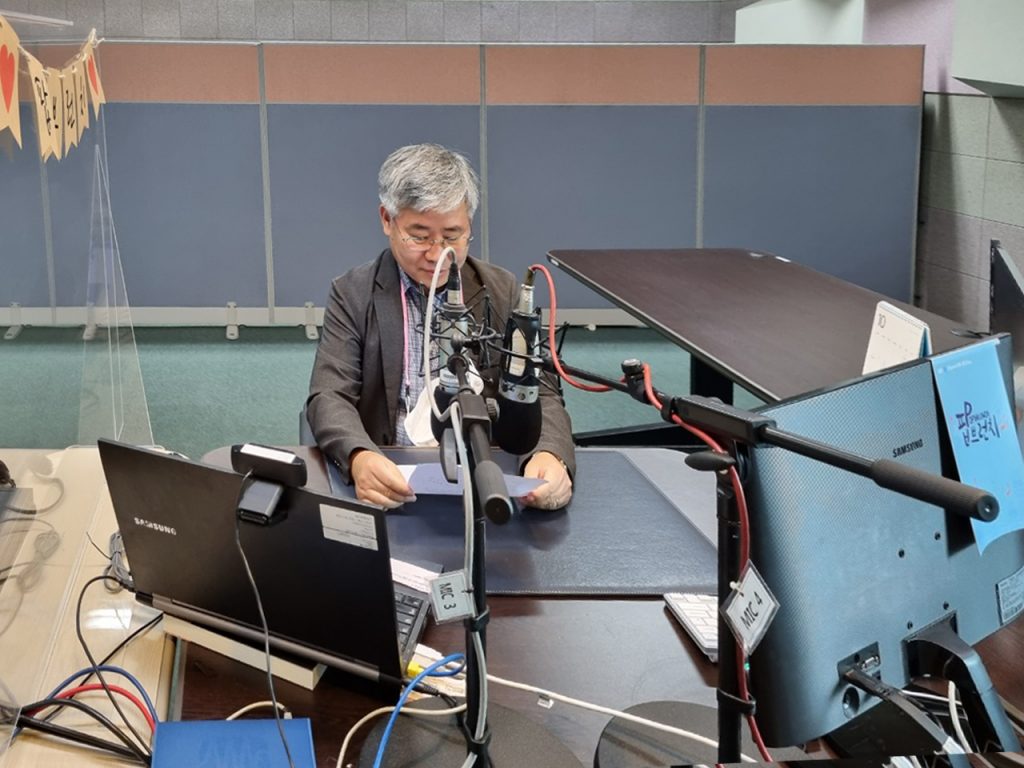

multimedia braille-tactile books
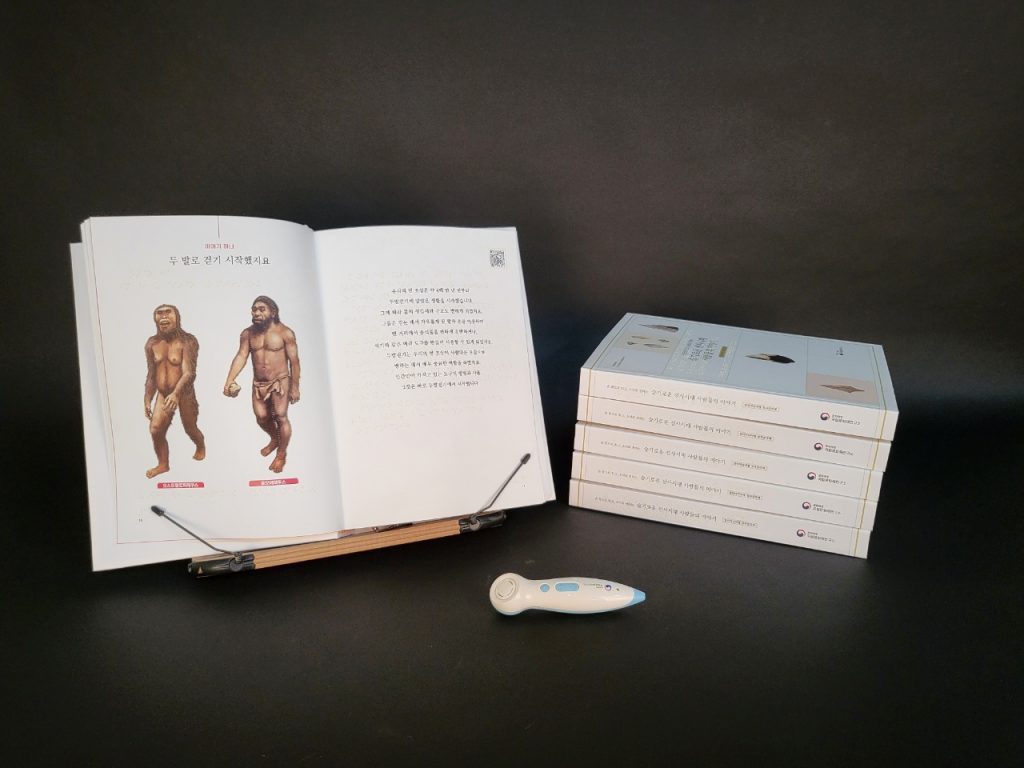

Braille is the only language system for the visually impaired. About 60,000 books are published every year in Korea, of which only about 10 percent are available for the visually impaired, causing a knowledge gap. Books allow readers to learn and experience worlds they have never experienced before. Which is why everyone should have equal opportunity to read. The NRICH is publishing braille-tactile books for the visually impaired.
The first braille-tactile book in the field of archaeology
As Hallyu, or Korean wave, spreads globally, interest in Ko-rean cultural heritage also increased considerably. However, certain groups of people in Korea, such as the visually impaired, do not have access to accurate information on cultural heritage or are even exposed to wrong information. The National Research Institute of Cultural Heritage publishes braille-tactile books to provide accurate and reliable information on cultural heritage for the social minorities, including the visually impaired.
Stories of the Wise Pre-historic People is the very first piece of media content for the visually impaired covering ancient history. The braille-tactile book is accompanied by audio commentary and interesting sounds to satisfy people’s curiosity about cultural properties. Braille texts combined with sounds provide easier understanding of the detailed shapes of the portrayed objects. All of the braille letters were produced with non-toxic natural ingredients. The illustrations are also marked with embossed dots which allows for much better understating of the images. Illustrations and explanations are on the left pages, while the right-hand pages contain the prehistoric stories in texts. A unique interactive audio pen is included in the book which can read the texts out loud and play the sound effects.
The book’s theme is the Old Stone Age, or the Paleolithic Era, which refers to the prehistoric period dating back to roughly 2.6 million years ago with the earliest evidence of humans using stone tools, and lasted until 10,000 BCE. Interestingly, some of the behavioral patterns and cultures formed in the Old Stone Age persist today. Chipped stone tools have evolved into the knives and axes we use now. The custom to bury a person in a grave with flowers on the bodies also traces back to the Old Stone Age. However, we often mistake the Paleolithic culture. We call the anthropoids primitive and consider them barbaric. The book Stories of the Wise Prehistoric People provides an opportunity to correct such misconceptions and think about the times through stories related to archaeological sites and artifacts of the Old Stone Age in Korea.
The book consists of three chapters. Chapter 1 introduces the stories of the Paleolithic people, while chapter 2 introduces some archaeological sites in Korea and artifacts excavated from the sites. The last chapter answers frequently asked questions about the Old Stone Age.
This braille-tactile book is for the socially disadvantaged who might have difficulties accessing information on cultural heritage. Many people voluntarily participated in the making of this book. Lee Hanyong, the director of the Jeongok Prehistory Museum and professor Seong Chuntaek of Kyung Hee University supervised the overall contents and detailed illustrations are examined by Kim Soyoung, a curator of the Jeongok Prehistory Museum. For braille translation, the Daejeon Braille Library translated and proofread the text based on the Korean braille standards issued by the National Institute of Korean Language. K-pop singers Lee Jun-ho of 2PM and Kai of EXO, actor Cha Taehyun and MBC newscasters Heo Ilhu and Kim Chorong contributed their voices for the audio commentary recordings. The book was published in early December 2021.




Second Braille-Tactile Book Upgraded Reflecting Readers’ Opinions
Another braille-tactile book on Natural Monuments was published in 2021. This book introduces 70 species of animals designated as Natural Monuments. It describes the animals’ appearances and characteristics through folk songs related to the animals and with the patented “water drop” braille letters, which are made of natural ingredients. With the interactive audio pen, readers can hear the animals’ sounds and songs about them, providing richer experiences.
Various Korean people and enterprises took part in making of the braille-tactile book. People voluntarily participated in a fundraising campaign for the book. From April to June 2021, the AIA Life Insurance and SK C&C co-operated to launch the mobile application “AIA Vitality x T Health Habit” for a walking campaign. A total of 12,983 citizens took part in the campaign and the number of their steps were converted into project funds for the braille book. Fifty-nine citizens, as well as celebrities, donated their voices for the audio commentary. Footballer Son Heungmin read the article on the Golden Eagle, while actor Song Joongki’s voice was used for the story of the Hawk, Musk Deer, and Owl. The DMC Children’s Choir from Daejeon City sang the children’s songs and folk songs featuring the animals and vitalized the book.
The book, which was initially published in 2020, was improved to a great extent in 2021, with supplement is based on visually impaired readers’ feedbacks. Braille dots were raised higher than those from the previous publication, and the illustrations were simplified to improve the legibility. Directions for the interactive audio pen was also added for easier use. The NRICH distributed the book to 534 visually impaired children on October 15, commemorating the White Cane Day. The NRICH will continue to publish braille-tactile books on cultural heritage and expects to establish a sustainable impact.
